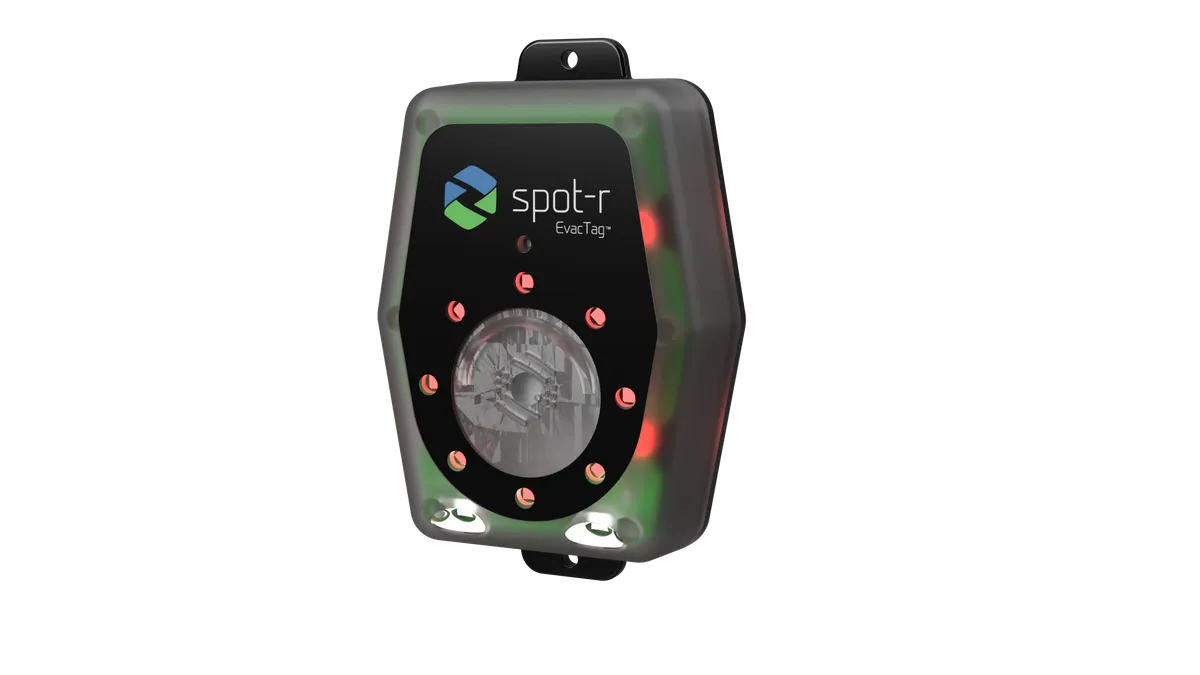Dive Brief:
- Triax Technologies has released what the company says is the first real-time construction-specific alert system for jobsite evacuations.
- Dubbed Spot-r EvacTag, the device is integrated with Triax's proprietary network and a wearable clip. It emits a high-decibel siren and visible LED alert, which personnel can trigger onsite via the Spot-r dashboard.
- The dashboard allows supervisors to tally headcounts and locations by floor and zone via the Spot-r clips on each worker, allowing for safe and thorough evacuation procedures, the company said.
Dive Insight:
Last year, Triax integrated its Internet of Things-enabled wearable tracking system, Spot-r, with Autodesk's BIM 360 platform to help boost jobsite connectivity and monitor workers and equipment. With that announcement came the Spot-r EquipTag, which the firm said transmits real-time data about workers' and equipment's activity, location and safety in an effort to reduce jobsite risk and maximize insight as to how jobsite operations work. The EvacTag is the company's latest addition to the connected sensors line aimed at enhancing workplace safety.
According to a Dodge Data & Analytics SmartMarketReport, technology such as BIM, drones and wearables all have a positive effect onsite to improving safety. Investing in safety also has positively impacted project budgets, schedules, quality and the ability to contract new work. Despite construction companies being slow to adopt wearables — only 13% in the study use them — 82% of that group indicated wearable technology has had a positive impact.
Artificial intelligence (AI) also is helping to boost understanding of how to protect workers. Researchers form the University of Waterloo in Ontario, Canada, are using motion sensors and AI to study how master masons move in an effort to reduce wear-and-tear injuries. Thanks to the multi-part study's findings, researchers now are developing a system of sensor suits that will give trainees immediate feedback and encourage them to modify their movements to be more ergonomic and reduce body strain, thereby curtailing premature wear.
In some cases, technology is replacing humans altogether in the name of safety, such as through a rebar-tying robot and a robot miner that can dive where humans cannot go safely. Gramazio Kohler Research is in the midst of developing robots to perform various construction tasks and automate jobs like stacking materials in nonstandard arrangements.














